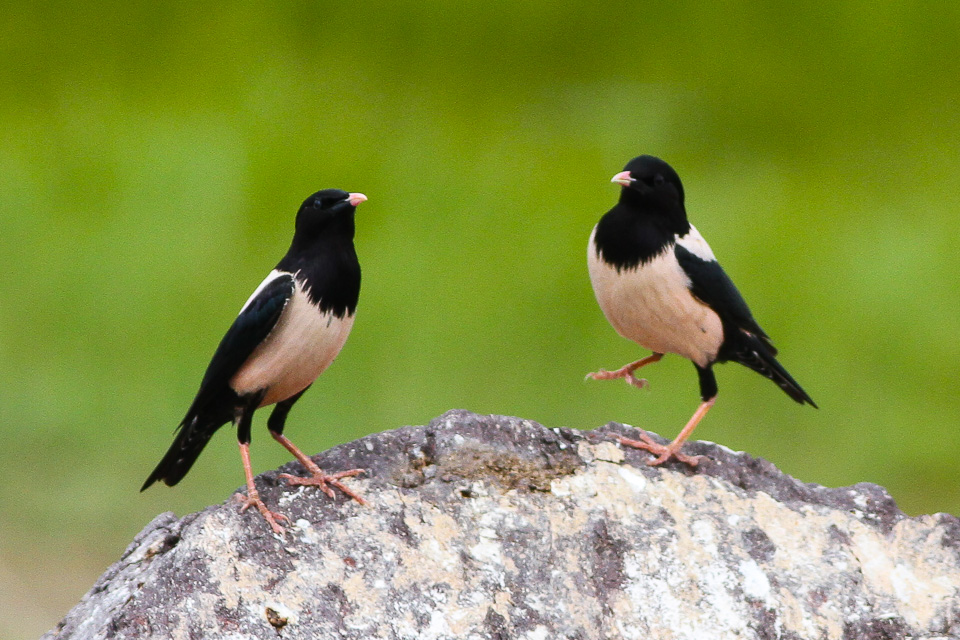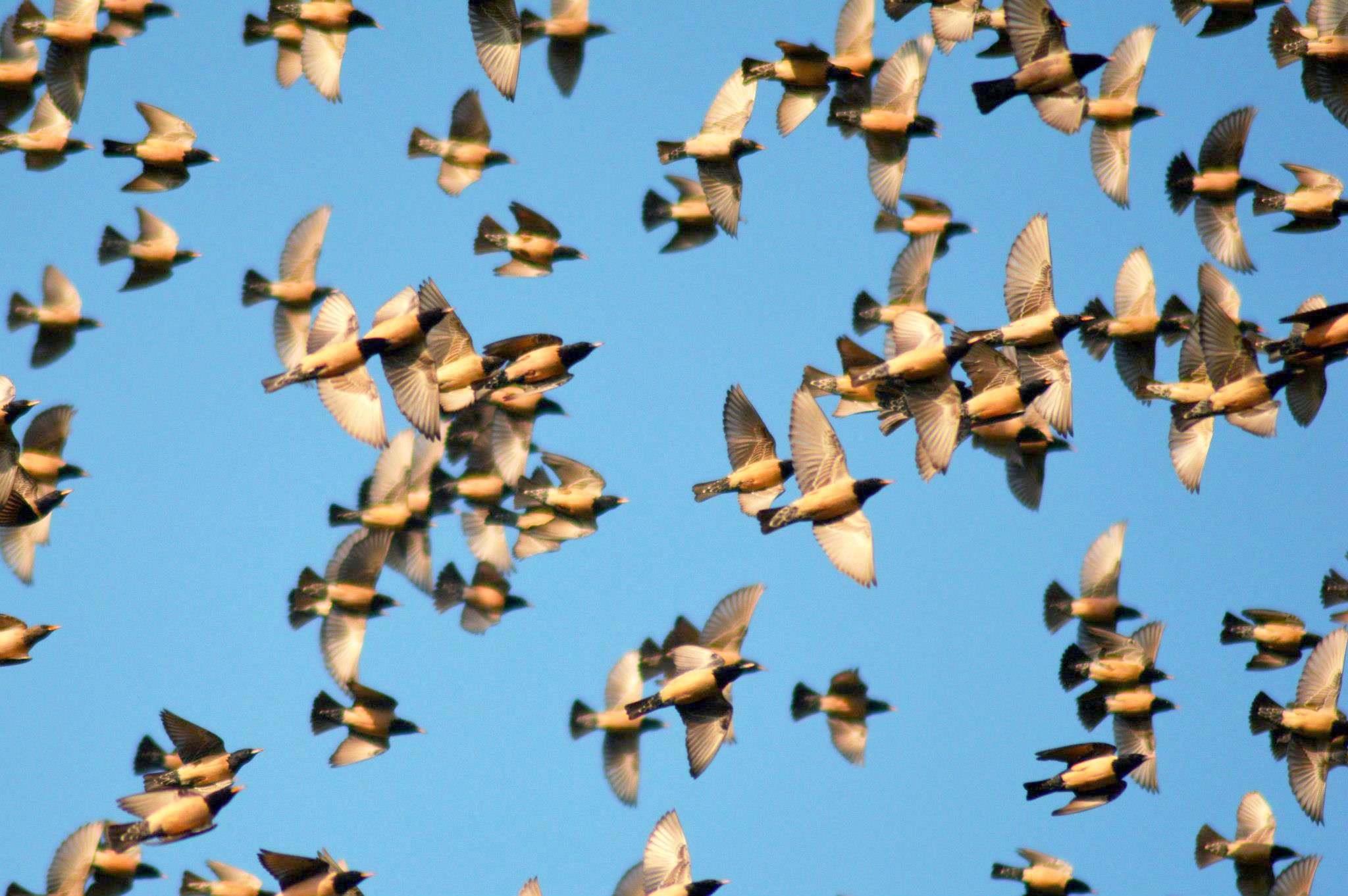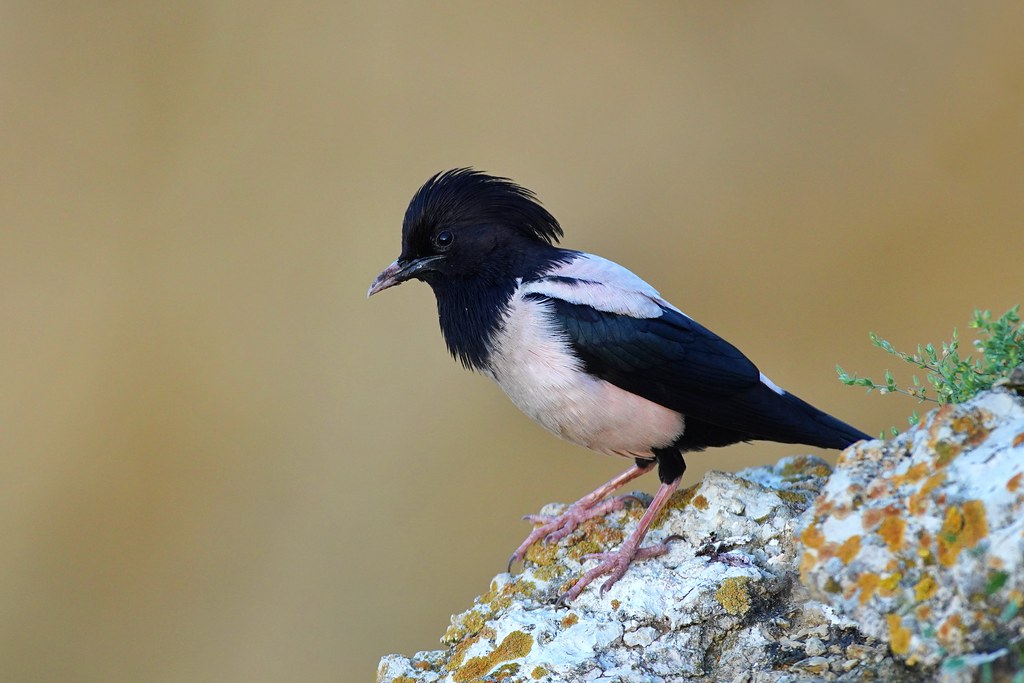Discover the world of rosy starling! Explore their habitat, behavior, diet, and migration patterns. Learn everything about these captivating birds.
Introduction to Rosy Starlings
Rosy Starlings (Pastor Roseus) stand out as captivating avian creatures adorned with a unique palette of colors. Their ethereal blend of glossy black and soft pink feathers distinguishes them from the avian realm. Renowned for their distinctive appearance and intriguing behavioral patterns, Rosy Starlings belong to the Sturnidae family, more commonly recognized as the starling family.
Overview of the Rosy Starling
Rosy Starlings exhibit a remarkable combination of physical attributes and behaviors that fascinate ornithologists and enthusiasts alike. From their migratory patterns to their communication methods, these birds have carved a niche in the avian world.
Significance in the Avian World
Their significance extends beyond their aesthetics. Rosy Starlings play a vital role in maintaining the ecological balance within their habitats. They contribute to the intricate web of life, influencing various aspects of their ecosystems, from pollination to pest control.
Taxonomy and Classification of Rosy Starlings
Classified under the scientific name Pastor Roseus, these starlings have garnered attention not only for their aesthetic appeal but also for their distinct taxonomic placement and classification.
Rosy Starling Habitat and Distribution
The intricate tapestry of habitats that birds occupy and their global distribution patterns offer a fascinating glimpse into the adaptability and resilience of these avian wonders.
Natural Habitat Preferences
- Diversity in Habitats: Rosy Starlings exhibit an eclectic taste in habitats, ranging from open steppes to wooded regions across Europe and Asia.
- Preferential Nesting Grounds: These birds show a marked preference for nesting in colonies within steppe regions, embracing the communal approach to breeding.

Global Distribution Patterns
- Vast Geographical Range: Rosy Starlings boast a broad distribution range extending from Eastern Europe through Central Asia.
- Wintering Grounds: During winters, these stunning birds migrate southward to wintering grounds in India and parts of Southeast Asia.
Seasonal Migration Routes
- Transcontinental Migrations: Witnessing remarkable seasonal migrations, They traverse vast distances, showcasing a spectacle of flight.
- Navigating Routes: Their migration routes exhibit a mix of precision and adaptation, demonstrating their ability to navigate across diverse landscapes.
Understanding the intricate balance between their habitat preferences and migratory behavior is integral to conserving and appreciating the unique essence of Rosy Starlings.
Physical Characteristics of Rosy Starlings
Understanding the distinctive physical attributes of Rosy Starlings offers a captivating glimpse into their remarkable adaptability and visual allure.
Description of Adult Rosy Starlings
- Glossy Plumage: Adults boast an exquisite blend of glossy black and pale pink, a mesmerizing contrast that distinguishes them in the avian world.
- Striking Features: Their crested head, neck, wings, vent, and tail create a visually stunning ensemble, captivating birdwatchers and researchers alike.
Unique Features in Juvenile Rosy Starlings
- Transitioning Plumage: Juveniles present a different spectacle, adorned in brown hues with an orange bill, gradually transitioning into their stunning adult plumage.
- Distinctive Markings: As they mature, the evolution of their plumage and bill coloration becomes a testament to the species’ captivating development.
Notable Physical Traits and Markings
- Size and Weight: Rosy Starlings, with an average mass of 2.6 ounces, are of moderate size within the starling family.
- Vocal Apparatus: Their vocal prowess, producing distinct calls and sounds, adds an auditory dimension to their captivating physical presence.
Exploring these nuanced physical characteristics unveils the intricacies of Rosy Starlings, enhancing appreciation for their aesthetic appeal and evolutionary adaptations.
Rosy Starling Behavior and Ecology
Exploring the behavior and ecological dynamics of Rosy Starlings unveils a tapestry of fascinating traits and interactions that define their existence.
Colonial Breeding Behavior
- Group Dynamics: Rosy Starlings exhibit gregarious tendencies, nesting in colonies that can reach substantial sizes, fostering a sense of community during the breeding season.
- Nesting Structures: They showcase resourcefulness in crafting nests, often utilizing cavities in trees or even man-made structures, reflecting adaptability in urban settings.
Feeding Habits and Diet Preferences
- Diverse Diet: Their omnivorous nature spans a diverse range of food sources, including insects, fruits, seeds, and even small vertebrates, reflecting adaptability in foraging.
- Foraging Techniques: Rosy Starlings demonstrate agility in catching insects mid-flight, showcasing impressive aerial skills during feeding sessions.
Communication and Vocalizations
- Social Chatter: Vocal exchanges play a pivotal role in social communication, facilitating interactions within the colony and during migration.
- Varied Calls: Their repertoire includes a range of calls, from contact chatter while feeding to distinctive flight and alarm calls, aiding in group cohesion and signaling potential threats.
Understanding these behavioral patterns and ecological intricacies sheds light on the resilience and adaptability of Rosy Starlings in diverse habitats and social contexts.

Rosy Starling: Conservation Status and Concerns
The conservation status of Rosy Starlings remains a critical focus within ornithological circles due to population trends and diverse threats that impact their existence.
Current Conservation Status
- IUCN Assessment: The IUCN Red List classifies Rosy Starlings as a species of “Least Concern,” yet fluctuations in population sizes are observed and monitored.
- Population Trends: Regional variations in population densities have been noted, raising alarms about localized declines.
Factors Contributing to Population Trends
- Habitat Loss: Degradation and fragmentation of their natural habitats due to agricultural expansion and urbanization pose significant challenges.
- Climate Impact: Alterations in climate patterns might affect their breeding success and distribution, creating additional stressors.
- Human Disturbance: Disturbance at nesting sites and pesticide exposure impact their reproductive success and overall survival rates.
Efforts in Rosy Starling Conservation
- Research and Monitoring: Collaborative research projects aim to fill knowledge gaps, focusing on behavior, migration, and habitat preferences.
- Conservation Initiatives: Local conservation organizations strive to protect vital habitats, implement nest-box programs, and educate communities about their importance.
Key Challenges
- Sustainable Land Use: Balancing agricultural needs with conservation efforts to maintain suitable habitats.
- Climate Adaptation Strategies: Developing strategies to mitigate climate-induced impacts on their populations.
- Community Engagement: Enhancing awareness and garnering community support for conservation endeavors.
Understanding and addressing these concerns are pivotal in ensuring the sustained existence of Rosy Starlings in our ecosystem.
Rosy Starling: Human Interaction and Cultural Impact
The relationship between humans and Rosy Starlings extends beyond ecological significance, delving into the realm of cultural impact and historical significance across diverse civilizations.
Historical Significance and Folklore
- Historical Mentions: Rosy Starlings have adorned the folklore and traditions of various cultures, often symbolizing good fortune, unity, or change.
- Symbolism in Mythology: Ancient beliefs portray these birds as symbols of love, transformation, or celestial messengers in folklore and mythology.
Human Activities Impacting Rosy Starlings
- Agricultural Influence: Agricultural practices impact their habitats, altering nesting sites and food availability.
- Urbanization: Expansion of urban areas encroaches upon their natural habitats, leading to habitat loss and reduced breeding areas.
- HistoricalHunting Practices: In the past, Rosy Starlings were hunted for their plumage, leading to population declines in some regions.
Rosy Starlings in Popular Culture
- Art and Literature: Depicted in art, literature, and poetry, these birds captivate the human imagination, symbolizing beauty, freedom, or change.
- Cultural Festivals and Traditions: Some cultural festivities celebrate the arrival or departure of Rosy Starlings, signifying seasonal changes or auspicious occasions.
Impact on Conservation
- Cultural Awareness for Conservation: Cultivating cultural awareness fosters support and involvement in conservation efforts.
- Preserving Traditions in Harmony with Conservation: Encouraging sustainable practices that protect Rosy Starlings while respecting cultural significance.
The intersection between human societies and Rosy Starlings not only influences conservation strategies but also enriches cultural narratives and traditions worldwide.
Observing Rosy Starlings: Birdwatching and Sightings
Birdwatching enthusiasts and ornithologists find immense joy in observing Rosy Starlings, their sightings fostering a deeper understanding of these avian creatures and their behaviors.
Ideal Birdwatching Spots
- Seasonal Habitats: During migration, prime locations for spotting Roy starlings include regions where their population peaks, such as parts of Europe and Asia.
- Nesting Grounds: Monitoring known nesting areas during breeding seasons offers opportunities to witness their nesting behaviors and interactions.
Tips for Observing Rosy Starlings
- Early Mornings and Dusk: Rosy Starlings are often more active during early mornings and evenings, making these times optimal for sightings.
- Quiet Observation: Minimizing noise and disturbance aids in observing their natural behaviors and interactions.
- Binoculars and Optics: Utilizing binoculars or spotting scopes enhances the experience, allowing for better observation of their plumage and behaviors.
Endearing Encounters: Stories of Rosy Starling Sightings
- Shared Experiences: Enthusiasts share anecdotes of their encounters, narrating the delight of observing the birds in their natural habitats.
- Community Observations: Online forums and birdwatching clubs serve as platforms for sharing sightings, fostering a community around Rosy Starling’s observations.
Witnessing Rosy Starlings in their natural habitats not only provides a thrilling experience but also contributes to citizen science efforts, aiding in data collection for conservation research.

FAQs about Rosy Starlings
Curiosity about Rosy Starlings often leads to a plethora of questions. Here are some frequently asked questions to deepen your understanding of these fascinating avians.
What is the migration route of Rosy Starlings?
- Rosy Starlings follow a vast migration path, spanning from their breeding grounds in Europe and Asia to their wintering grounds in Africa and the Indian subcontinent.
- The specific routes can vary, influenced by factors like weather patterns, food availability, and geographical features.
How different are male and female Rosy Starlings?
- Generally, male and female Rosy Starlings display sexual dimorphism.
- Males often have brighter and more vibrant plumage, showcasing glossy pink and black colors, while females possess a comparatively duller appearance.
What factors influence the migration distance of Rosy Starlings?
- The migration distance is primarily shaped by seasonal changes, resource availability, and breeding requirements.
- Climate variations and ecological factors also play crucial roles in determining the range and duration of their migration.
Why do Rosy Starlings migrate?
- Migration ensures access to ample food resources and suitable breeding grounds.
- Climate changes and limited food availability during harsh seasons drive them to migrate in search of favorable conditions.
What are the unique sounds produced by Rosy Starlings?
- Rosy Starlings are known for their diverse vocalizations, ranging from melodious calls to chattering notes.
- During breeding seasons, they exhibit specific calls for courtship and territorial purposes.
Exploring these FAQs sheds light on various aspects of Rosy Starlings’ behaviors, adaptations, and survival strategies.
Conclusion
Reflecting on the journey through the world of Rosy Starlings reveals a captivating avian species deserving of admiration and conservation efforts.
Summary: Key Insights on Rosy Starlings
- Rosy Starlings, characterized by their striking plumage, exhibit remarkable behaviors, from colonial breeding habits to diverse vocalizations.
- Their migration patterns span vast distances, reflecting a complex adaptation to changing environmental conditions.
- Conservation endeavors play a pivotal role in preserving these birds, addressing threats to their habitats and population decline.
Future Prospects and Conservation Outlook
- Continued research on Rosy Starlings is vital for understanding their intricate behaviors and ecological needs.
- Collaborative efforts among conservationists, governments, and communities can ensure sustainable protection for these birds.
- Raising awareness about the significance of preserving Rosy Starlings’ habitats is crucial for their long-term survival.
Encouraging Awareness and Protection of Rosy Starlings
- Engaging the public through education, citizen science initiatives, and community involvement can foster a sense of responsibility toward their conservation them.
- Encouraging ecotourism focused on responsible birdwatching can promote appreciation for these avian wonders while supporting conservation efforts.
As we conclude this exploration, it is evident that they hold a unique place in the avian world. Through concerted efforts and awareness, we can secure a brighter future for these magnificent birds.

1 thought on “Unveiling the Enigmatic World of Rosy Starling | All You Need to Know”
Comments are closed.